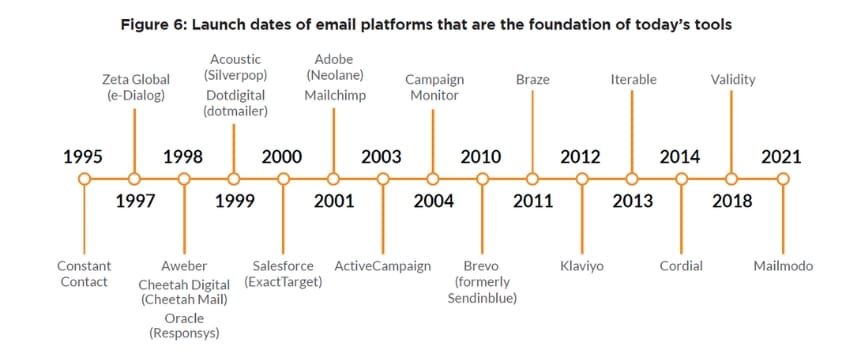Beyond the Send Button: What Truly Defines Email Platforms Today?

▼ Summary
– The email marketing landscape has evolved to include standalone tools, integrated marketing clouds, and cross-channel innovators, focusing on sophisticated data management, seamless integration, and embedded intelligence.
– Effective data management is crucial, with platforms incorporating Customer Data Platform (CDP) functionality to create unified customer profiles from various data sources for advanced segmentation and personalization.
– Analytics and reporting capabilities must connect email activity to broader business goals and customer lifetime value, especially as traditional metrics like open rates become less reliable due to privacy measures.
– Integration across channels is essential, with modern platforms needing seamless connections with CRM systems, ecommerce platforms, SMS and mobile push notifications, social media advertising, and data warehouses.
– Intelligence and automation are now standard, with AI and ML used for optimizing send times, content suggestions, and audience segmentation, along with robust workflow automation for triggered message series and complex nurture programs.
The email marketing platform landscape has evolved significantly from the days when simply sending bulk emails was the primary function. Today’s market, as illustrated in the Martech Intelligence Report (Figures 6 & 7), is a diverse ecosystem encompassing standalone tools, integrated marketing clouds from giants like Adobe, Salesforce, and Oracle, and nimble cross-channel innovators. For businesses evaluating these options, the differentiating factors now lie heavily in sophisticated data management, seamless integration capabilities, and embedded intelligence features.

Data: The New Core of Email Marketing
Effective data management has become dominant. Simply holding a list of email addresses is no longer sufficient. Leading platforms are increasingly incorporating Customer Data Platform (CDP) functionality, or offering deep integrations with them, as seen with Klaviyo’s CDP launch mentioned in Table 1. The goal is to create a unified customer profile by ingesting data from various sources: email interactions, website behavior, purchase history, mobile app usage, even offline data, and making it actionable within the platform. This unified view powers the advanced segmentation and personalization necessary to make messages relevant and effective, moving beyond basic demographics to behavioral and predictive attributes.
Consequently, analytics and reporting capabilities must also mature. Platforms need to offer insights that connect email activity to broader business goals and customer lifetime value, especially as traditional metrics like open rates become less reliable due to privacy measures like Apple’s Mail Privacy Protection (MPP), a challenge noted in the “Data pressures” section of the report.
Integration: Connecting the Dots Across Channels

Integration is another critical differentiator. Email rarely operates in isolation. A modern platform must function as a connected hub within the broader marketing technology stack. This means seamless, often bi-directional, integrations with CRM systems, ecommerce platforms (enabling features like abandoned cart emails and personalized product recommendations), SMS and mobile push notification systems (reflecting the omnichannel trend highlighted in the Martech report, with SMS use growing), social media advertising platforms, and potentially data warehouses or business intelligence tools.
Table 3 in the report provides a comparison, showing variations in native capabilities versus partner integrations for features like SMS messaging or advanced dynamic email building. The smoother these integrations, the more consistent the customer experience across channels and the more powerful the orchestration possibilities become, allowing for truly cohesive customer journeys.
Intelligence and Automation as Standard
Finally, intelligence and automation are no longer optional extras but expected components. As detailed in Table 2 of the Martech report, Artificial Intelligence (AI) and Machine Learning (ML) are being leveraged across platforms for tasks like optimizing send times, suggesting content and personalization strategies, generating copy, and identifying audience segments likely to engage or churn.
Robust workflow automation capabilities are also essential, enabling marketers to easily build triggered message series (like welcome journeys or re-engagement campaigns, which Figure 3 shows can be highly profitable relative to standard campaigns) and complex, multi-step nurture programs based on customer behavior or lifecycle stage.
While foundational elements like intuitive message design, comprehensive previewing, and robust deliverability management remain crucial, the platforms winning today are those excelling in data unification, broad integration, and intelligent automation.
